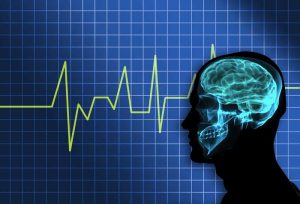The spring forward time change doesn’t just mean one less hour of sleep. Researchers have found that it may contribute to an increase in stroke.
Many Americans dread the spring time change, which moves clocks forward an hour. Spring forward means an extra hour of light in the evening, but also one hour less of sleep. It can take people several weeks to adequately adjust to this change, leading to increased car accidents and occupational accidents. In addition, a new study suggests that the spring time change also increases the rate of cerebrovascular accidents, or strokes.
Spring Forward and Ischemic Strokes
The most common type of stroke is an ischemic stroke, in which a blood clot cuts off blood supply to a region of the brain. Because the brain depends on a steady blood supply for nutrients and oxygen, the tissues quickly die without blood flow. This can cause paralysis, loss of functions such as speaking, and even death. In fact, strokes comprise 1 out of 20 deaths in the United States.
After the spring forward time change, the incidence of ischemic strokes increases 8%. However, that number goes back to normal after two days. This suggests that the abrupt disruption to our circadian rhythm may be having more negative biological effects than we had previously suspected.
How Can a Time Change Increase Stroke?

Is the Time Change Worth It?
Daylight savings time began as a way to maximize daylight hours. Twice a year, the clocks are adjusted so we are awake during almost all light hours. This can lead to a decrease in energy usage, but it is not without its side effects. The link to stroke is not the first time that an increase in serious and life-threatening disease has been linked to the change of the clocks. A previous study found that heart attacks also increase in the period after the spring time change. With the wide availability of energy saving light bulbs and other devices, is the extra hour of sunlight worth the increased health risks? Many chronobiology experts, physicians, and even politicians say no.
While it is unlikely that Daylight Savings Time will end in the near future, there are a few ways that people can adjust in a healthy manner. Begin going to bed earlier and waking slightly earlier in the week before the time change, to allow your body to slowly adjust. People who work in healthcare can watch more carefully for signs of stroke, heart attack and other diseases in the immediate period after the time change. Until and unless the clock change is stopped, we can all find ways to make the transition easier on our bodies and minds.







